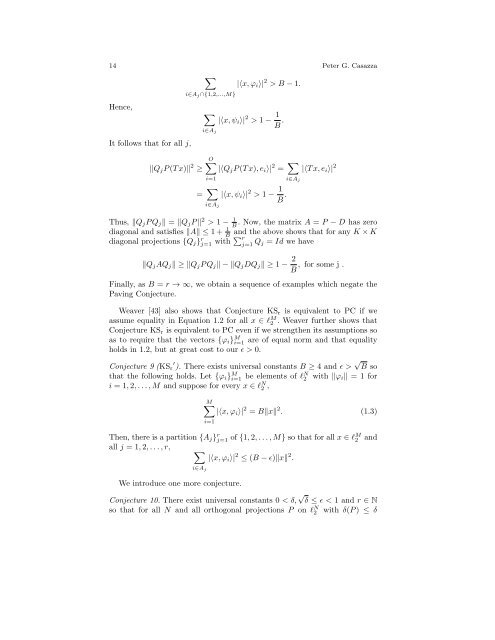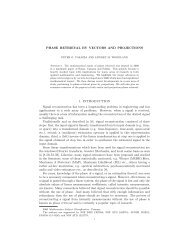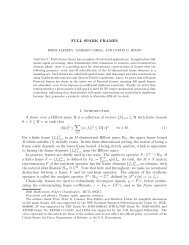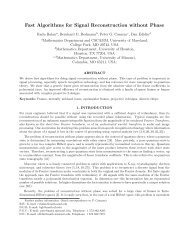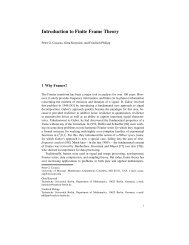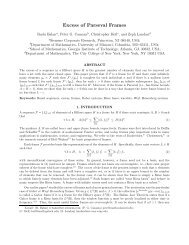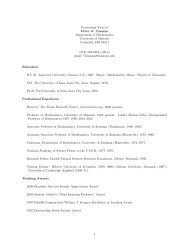The Kadison-Singer and Paulsen Problems in Finite Frame Theory
The Kadison-Singer and Paulsen Problems in Finite Frame Theory
The Kadison-Singer and Paulsen Problems in Finite Frame Theory
Create successful ePaper yourself
Turn your PDF publications into a flip-book with our unique Google optimized e-Paper software.
14 Peter G. Casazza∑|〈x, ϕ i 〉| 2 > B − 1.Hence,It follows that for all j,‖Q j P (T x)‖ 2 ≥i∈A j∩{1,2,...,M}∑i∈A j|〈x, ψ i 〉| 2 > 1 − 1 B .O∑|〈Q j P (T x), e i 〉| 2 = ∑i=1= ∑i∈A j|〈x, ψ i 〉| 2 > 1 − 1 B .i∈A j|〈T x, e i 〉| 2Thus, ‖Q j P Q j ‖ = ‖Q j P ‖ 2 > 1 − 1 B. Now, the matrix A = P − D has zerodiagonal <strong>and</strong> satisfies ‖A‖ ≤ 1 + 1 B<strong>and</strong> the above shows that for any K × Kdiagonal projections {Q j } r j=1 with ∑ rj=1 Q j = Id we have‖Q j AQ j ‖ ≥ ‖Q j P Q j ‖ − ‖Q j DQ j ‖ ≥ 1 − 2 , for some j .BF<strong>in</strong>ally, as B = r → ∞, we obta<strong>in</strong> a sequence of examples which negate thePav<strong>in</strong>g Conjecture.Weaver [43] also shows that Conjecture KS r is equivalent to PC if weassume equality <strong>in</strong> Equation 1.2 for all x ∈ l M 2 . Weaver further shows thatConjecture KS r is equivalent to PC even if we strengthen its assumptions soas to require that the vectors {ϕ i } M i=1 are of equal norm <strong>and</strong> that equalityholds <strong>in</strong> 1.2, but at great cost to our ɛ > 0.Conjecture 9 (KS ′ r ). <strong>The</strong>re exists universal constants B ≥ 4 <strong>and</strong> ɛ > √ B sothat the follow<strong>in</strong>g holds. Let {ϕ i } M i=1 be elements of lN 2 with ‖ϕ i ‖ = 1 fori = 1, 2, . . . , M <strong>and</strong> suppose for every x ∈ l N 2 ,M∑|〈x, ϕ i 〉| 2 = B‖x‖ 2 . (1.3)i=1<strong>The</strong>n, there is a partition {A j } r j=1 of {1, 2, . . . , M} so that for all x ∈ lM 2all j = 1, 2, . . . , r, ∑|〈x, ϕ i 〉| 2 ≤ (B − ɛ)‖x‖ 2 .i∈A j<strong>and</strong>We <strong>in</strong>troduce one more conjecture.Conjecture 10. <strong>The</strong>re exist universal constants 0 < δ, √ δ ≤ ɛ < 1 <strong>and</strong> r ∈ Nso that for all N <strong>and</strong> all orthogonal projections P on l N 2 with δ(P ) ≤ δ


